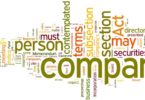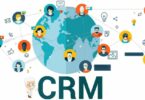Classification of products into goods, services, and ideas is determined by which of the following:
(a) Degree of labor intensiveness
(b) Type of markets
(c) Dominant component
(d) Skill of the service provider
Which of the following sets of terms best describes a service?
(a) Objects, devices, and performances
(b) Efforts, objects, and deeds
(c) Things, devices, and performances
(d) Deeds, effort, and performances
Which of the following strategies increases the supply of service available to consumers?
(a) Increasing consumer participation
(b) The use of creative pricing strategies
(c) The use of reservation systems
(d) Developing complementary services
Related: multiple choice questions in Excel
Which fields would be least likely to be described as intangible-dominant?
(a) Manufacturing
(b) Education
(c) Insurance
(d) Banking
The perishability-related strategy that may sometimes be associated with consumer feelings that the service firm may be attempting to distance itself from consumers is:
(a) The use of reservation systems
(b) Training public contact personnel
(c) The use of third parties to conduct service transactions
(d) Increasing the amount of consumer participation
If a marketing agency is exposing its customers to its various other services also, it will be known as:
(a) Cross-selling
(b) Market Research
(c) Customer Relationship Extension
(d) Competition
Which of the following statements is not true?
(a) Service knowledge is obtained differently than good knowledge.
(b) Firms that define their businesses too narrowly have developed a marketing myopia.
(c) Goods are tangible-dominant.
(d) All of the above are true
Related: questions about Entrepreneurship
Which one of the following strategies is used to alter consumer demand?
(a) Increasing consumer participation
(b) Utilizing third parties
(c) Utilizing creative pricing strategies
(d) Sharing capacity
The demand for service marketing knowledge has increased for the following reasons except:
(a) The tremendous growth in service-sector employment
(b) Increasing service-sector contributions to the world economy
(c) The deregulation of many service industries
(d) The decline in service sector jobs
Which of the following attributes of services makes it difficult for a service provider to evaluate them when compared to goods?
(a) High search and experience quality
(b) High experience and credible quality
(c) High credence and search quality
(d) Both b and c
The service sector has lower productivity improvements than the manufacturing sector because
(a) the service sector uses less skilled labor than manufacturing
(b) the quality of output is lower in services than in manufacturing
(c) services usually are labor-intensive
(d) service sector productivity is hard to measure
The market-focused management model, supported by the service triangle, is based on the belief that:
(a) Front-line personnel tend to be more knowledgeable
(b) Employees want to do good work
(c) Customer satisfaction is related to employee turnover
(d) A new accounting measure should be used.
Services can be meaningfully analyzed by using a five-category classification scheme including type of market, degree of labour-intensiveness, degree of customer contact, skill of service provider, and
(a) Degree of competition within the service industry.
(b) Goal of the service provider.
(c) Market share of the service provider.
(d) Employee structure of the service provider
In planning a service process, a service provider takes all the following essential decisions except
(a) Conversion process
(b) Legal restrictions
(c) Flow of process
(d) Layout design
All of the following characteristics characterize services except for:
(a) Intangibility
(b) Homogeneity
(c) Perishability
(d) Heterogeneity
Out of the following circumstances, a service guarantee should be used when: –
(a) Service quality is truly uncontrollable
(b) Customers perceive high risk in the service
(c) Guarantee does not fit the company’s image
(d) Existing service quality in the company is poor
The appearance of the production facilities and the interpersonal skills of current service providers are critical in __________ services.
(a) Low-contact
(b) Equipment-based
(c) Industrial
(d) Nonprofessional
Which of the following is not true when explaining why productivity tends to be lower in the service sector than in the manufacturing sector?
(a) Services are typically labor intensive
(b) Services are often difficult to evaluate for quality
(c) Services are often an intellectual task performed by professionals
(d) Service operations are typically capital-intensive
Which of the following statements is false?
(a) Services cannot be touched or seen in the same way as goods.
(b) Consumer judgments about services tend to be more subjective than
(c) objective.
(d) Services are first produced, then sold, then consumed
Of the four unique service characteristics that distinguish goods from services, the one that is the primary source of the other three characteristics is:
(a) Intangibility
(b) Inseparability
(c) Homogeneity
(d) Perishability
Related: quiz on communication skills
The gap between a customer’s desired service expectation and the adequate service expectation is
(a) Zone of tolerance
(b) Predicted service expectation
(c) Derived service expectation
(d) Implicit service promise
Which of the following is not a typical service attribute?
(a) intangible product
(b) easy to store
(c) customer interaction is high
(d) simultaneous production and consumption
(e) difficult to resell
Which of the following is a marketing problem caused by intangibility?
(a) Services have no cost of goods sold.
(b) The consumer is involved in the production process.
(c) Other consumers are involved in the production process.
(d) Service standardization and quality control are difficult to achieve
A service guarantee must not be
(a) Conditional
(b) Meaningful
(c) Easy to invoke
(d) Easy to communicate
Which of the following is not a positioning strategy used in service marketing?
(a) Attribute positioning
(b) Celebrity positioning
(c) Competitor positioning
(d) Category positioning
The ability of the service provider and his employees to use their knowledge and courteous behavior to instill trust and confidence in customers regarding the service is referred to as:
(a) Assurance
(b) Responsiveness
(c) Empathy
(d) Reliability
Which of the following scenarios is likely to lead to the highest levels of customer dissatisfaction?
(a) Higher demand than maximum available supply
(b) Higher demand than optimal supply levels
(c) Lower demand than optimal supply levels
(d) All of the above scenarios result in customer dissatisfaction
Which of the following strategies increases the supply of service available to consumers?
(a) The use of creative pricing strategies
(b) The use of reservation systems
(c) Capacity sharing
(d) Developing complementary services
The intangible aspect of a service springs forth from which of the following service product levels?
(a) Actual product level
(b) Core product level
(c) Augmented product level
(d) Potential product level
Which services are usually not customized to a particular individual’s needs?
(a) hairdressing
(b) elementary education
(c) legal services
(d) dental care
Related: what is a cheque?
Which of the following businesses is closest to producing “pure” services?
(a) A Restaurant
(b) Counsellor/therapist
(c) Steel company
(d) IT company
Service Customization’ means ________
(a) Tailor-made products and services for each customer
(b) Customers selling goods
(c) Tailor-made products for each staff
(d) A selling process
Services differ from manufactured products in four ways. Intangibility, Inseparability, Perishability, and _____?
(a) Homogeneity
(b) Heterogeneity
(c) Intractability
(d) Invisibility






